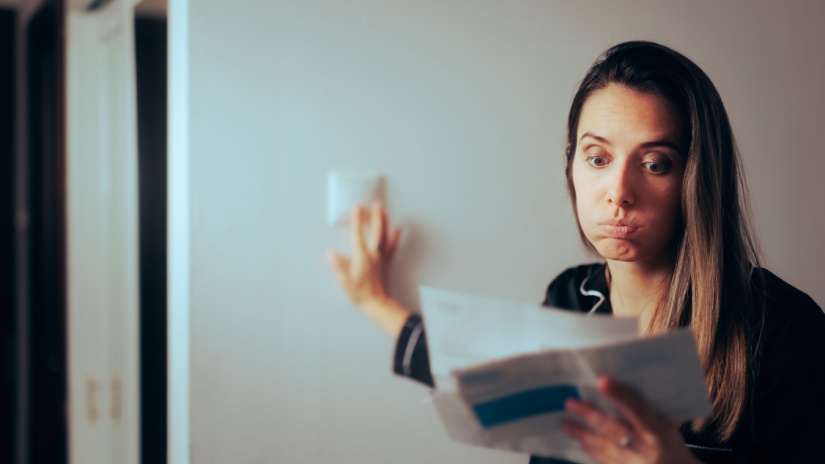Knowledge Centre
Understanding estimated energy bills

Have you received an estimated electricity or gas bill? It’s not uncommon for energy companies to simply guess how much energy you’ve used over the last month or quarter, possibly meaning you’ve been charged for power you didn’t even use.
In Australia, getting an estimated energy bill can make it hard to manage household finances. When energy companies can't get exact meter readings, they send bills based on past use or averages.
Estimated bills delay immediate payments but may cause problems if actual usage differs a lot from estimates. It's important for consumers to grasp these implications to avoid surprises and plan their energy budgets accurately.
So, what’s the purpose of estimated energy bills and why are you receiving them instead of meter readings? We reveal the common reasons for estimated billing below and what you can do to avoid copping one on your next power bill.
Why do energy providers send estimated energy bills?
Energy providers in Australia send estimated energy bills for several reasons and those include the following:
They can’t access your meter
Sometimes, meter readers can't physically access the meter due to locked gates, aggressive pets, or other barriers. In such cases, the energy provider estimates the usage rather than delaying the billing process.
It’s expensive to read every property meter
Sending meter readers to every property to take readings frequently is costly. To manage expenses, providers estimate bills between actual meter readings, especially for customers who opt for more frequent billing cycles like monthly instead of quarterly.
It’s convenient
Estimating bills ensures customers receive bills regularly, even if meter readings aren't always feasible. It prevents delays and keeps billing cycles consistent, which is convenient for both customers and providers.
You’re switching providers
When customers switch energy providers, estimated bills may be used to close out the old account quickly under new regulations. This facilitates smoother transitions between providers.
Regulatory requirements
In some cases, regulations may permit or require estimated bills under specific circumstances, such as during a transition period between meter readings or during unexpected disruptions in meter access.
Who is supposed to read your energy meter?
In the past, your local energy distributor used to send a meter reader to record your electricity and gas usage. Now, new rules require energy retailers to appoint metering coordinators. These coordinators handle metering services like installation, repairs, and maintenance on behalf of retailers.
If you have a smart meter, it sends your electricity usage data directly to the distributor digitally. This eliminates the need for a physical visit from a meter reader or for you to submit your own readings. As a result, customers with smart meters never receive estimated bills.
How to tell if your energy bill is an estimate
You can tell if your energy bill is estimated by checking the bill itself or contacting your energy provider. Here are some ways to identify if your bill is estimated:
Look for "Estimated" or "E" on the bill
Energy bills often indicate if the bill is estimated with a note or symbol like "E" next to the meter reading.
Compare with previous bills
Check if the current usage seems unusually high or low compared to your typical consumption patterns. Significant deviations could indicate an estimated bill.
Check your meter reading
If possible, check your meter reading against the reading on your bill. If they don't match or if there's no recent meter reading listed, it's likely an estimated bill.
Talk to your provider
If you're unsure, contact your energy provider. They can confirm whether the bill is estimated and explain why.
Estimated bills aren't something to worry about if you have a smart meter, as these meters provide accurate real-time data.
What to do if you disagree with your estimated bill
Getting an estimated energy bill can be frustrating, especially if it seems too high. What can you do about it? Unfortunately, there's not much to do immediately except ensure your meter is accessible for the next reading.
When your meter is eventually read, your energy retailer will adjust your account based on whether you've been charged too much or too little.
If you don't want to wait for the next reading, some retailers allow you to submit your own meter reading. They can then revise your previous bill accordingly and issue a corrected one. Any credits can be applied to your future bills.
In cases where you've received several estimated bills, some retailers may even revise bills from past months.
It's recommended that meters are read at least once a year to ensure accurate billing based on your actual usage. If you've been consistently receiving estimated bills, it might be a good idea to contact your provider and arrange for a meter reading to avoid further discrepancies. You can read more about what to do if you dispute your energy bills and get it straightened out.
Contact Compare Energy
Ready to switch to a provider that’ll stop estimating your bills and meet your budget? Talk to our Australia-based Compare Energy team on 1300 790 106 and we’ll talk you through your possible options.

